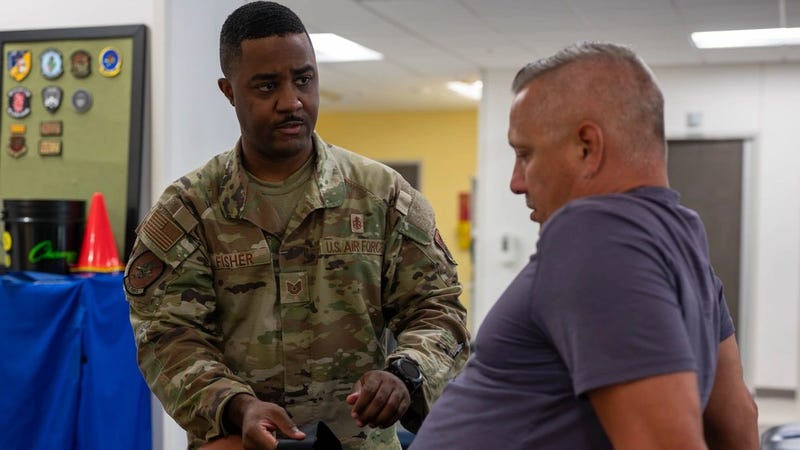
Many veterans face lasting physical and neurological challenges after service — from combat injuries to traumatic brain injuries sustained during training.
Yet one of the most effective tools supporting their recovery and return to independence - physical therapy - is often overlooked.
Retired Army Lt. Col. and Vice President of Clinical Integration and Innovation at the American Physical Therapy Association, Drew Contreras, said APTA’s recently launched national Campaign, PT for Future Me, that redefines physical therapy as not just for injury recovery, but as a proactive, lifelong investment in movement, strength, and independence.
“You can work with a professional who is going to work with you to give you the best results you can for whatever condition or situation you are in so you can live the life you want to live,” he said.
For veterans, APTA’s mission takes on even greater meaning — helping those with TBIs and other service-related injuries regain balance, coordination, and the confidence to transition successfully to civilian life.
“Your body is like all things; you have to take care of it,” Contreras said. “From time to time, you have to invest in it.”
Contreras served over 20 years on active duty as a career military officer and practicing physical therapist for both the Army and the Department of Defense (now the Department of War).
He earned his Master of Physical Therapy from Gannon University in 1998 and his Doctorate of Physical Therapy from the University of North Carolina at Chapel Hill in 2008. Contreras used those skills extensively during a 15-month continuous deployment in 2006-2007 during Operation Iraqi Freedom, where he was the first physical therapist to serve in sustained combat operations with the 82nd Airborne Division.
“When it comes to military service, you are taught that there is a lot of things you can tolerate in order to do the mission,” he said. “As you accumulate injuries, as you accumulate wear and tear, you realize that you have to do things in order to keep your body doing what you want it to do.”
Contreras said veterans should be aware of the signals their bodies may be sending them, such as pain or decreased mobility, similar to their car’s check engine light.
“If your vehicle’s check engine light comes on and you choose to ignore it, you know where that’s going to go,” he said. “When that happens to our bodies, we really don’t do anything about that.”
Contreras urged veterans to pay attention to what their body’s “warning lights” are telling them. He also said veterans often struggle with the notion of going to a physical therapist.
“They feel like I gotta go see somebody and I don’t know what to do,” he said. “The reality is, physical therapy is a very structured, laid out and methodical program.”
Contreras explained that veterans usually find that comforting.
“It makes a lot of sense, because they are used to structured pathways,” he said.
Physical therapy also provides an entryway to higher levels of care if the therapist identifies other underlying conditions that might not have been identified.
“For veterans, it’s okay for you not to keep tabs on your health, but invest in your health for you, your loved ones, your family,” he said. “Veterans are so used to giving of themselves. You have to put your gas mask on first before you can help somebody else.”
Reach Julia LeDoux at Julia@connectingvets.com.
